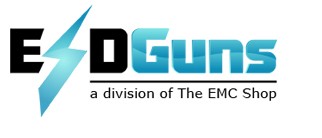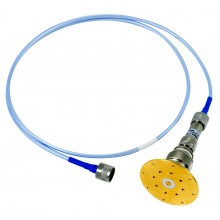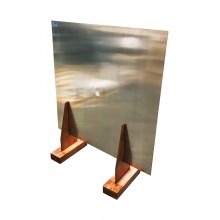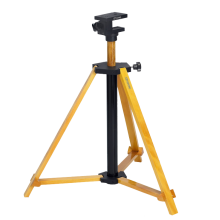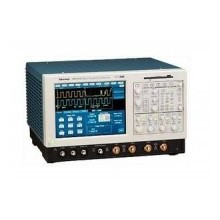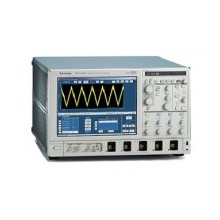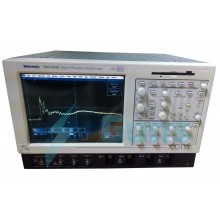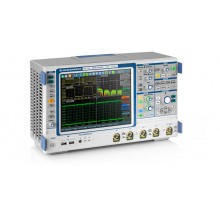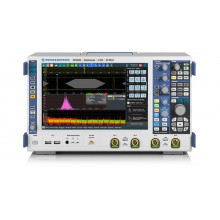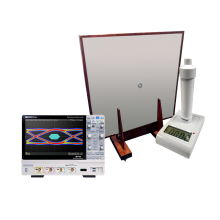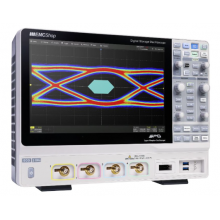No products
Product successfully added to your shopping cart
There are 0 items in your cart. There is 1 item in your cart.
Oscilloscopes for ESD Calibration
Viewed products
Best sellers
-

Schaffner / Teseq NSG 435 ESD Simulator for IEC 61000-4-2
Programmable discharge voltage 200 V to 16.5 kV Stabilized charging...
$590.00 -

ESDGuns.com GRC Series Ground Cable w/ 470k Ohm Resistors for ESD Voltage Bleeding
Ideal for voltage bleeding to Ground Plane during Indirect ESD Immunity...
$199.00 -

Rent Keytek Minizap MZ-15/EC 15kV ESD Simulator Gun
Rentals Ship Immediately Purchase Options See: Used Keytek Minizap ESD...
$495.00 -

ESD Guns IF Insulating Foil for ESD Compliance Testing
Suitable for EN/IEC 61000-4-2 ESD immunity compliance testing...
$197.00 -

Teseq / Schaffner INA 405 Ni-Mh Battery Pack Refurbishment for NSG 435 ESD Gun
ESD Guns can refurbish your existing INA 405 battery pack. Expected...
$275.00 -

Haefely ONYX 16 kV ESD Generator Gun
Rental Package IncludesAir and Contact Discharge Tips Output...
$595.00 -

Teseq NSG 437 Electrostatic Discharge (ESD) Simulator Gun for GR-1089 & IEC 61000-4-2
Air- and contact-discharge to 30 kV Color touch panel control Advanced...
$895.00 -

3ctest EDS 20H Hand-held 20kV Electrostatic Discharge ESD Simulator
Air- and Contact- Discharge: 1000 Volts - 20kV ±5% Rise time: 0.6-1ns RC...
$476.00
Tektronix TDS3054B 500MHZ, 5GS/s 4 Channel Digital Phosphor Oscilloscope
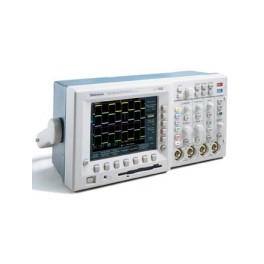 View larger
View larger Used
More info
The Tektronix TDS3054B oscilloscopes are the lowest priced, most portable Digital Phosphor Oscilloscopes (DPOs). Now every design engineer and technician can take advantage of the tremendous benefits of DPOs. DPOs deliver a new level of insight that makes dealing with complex signals simple. DPOs display, store and analyze in real-time three dimensions of signal information: amplitude, time and distribution of amplitude over time.
Benefits of Tektronix TDS3054B DPO
DPOs have an intensity graded color display that provides information about the frequency of occurrence of signal amplitudes and widths. This helps the user locate and characterize waveform anomalies that can be elusive on traditional Digital Storage Oscilloscopes. The fast update rate of DPOs also makes it easier to capture and display infrequent waveforms or waveform variations.
Quick to Learn and Quick to Use
The Tektronix TDS3054B graphical user interface offers a new operating mode called QuickMenu. This quick access user interface makes the main oscilloscope controls accessible with a push of a single button. Included with every scope is an On-line Tour disk that runs in the oscilloscope. This disk gives an overview of the product's operation and capabilities.
Flexible Features for Every Application
The portable form factor allows the instrument to go wherever it is needed. The Communication and Application Modules enable the instrument to be configured for specific applications or upgraded without returning it to the manufacturer. The TEKPROBETM Level II interface provides power to a range of application specific accessories.
Application Modules
With the application module concept, the Tektronix TDS3054B can be easily adapted to the needs of the user. These modules can be easily installed by the user, and upon power-up, the scope indicates which modules are installed. Currently, there are five application modules available for the Tektronix TDS3054B - a 601 digital video module, an extended video module, a telecommunications mask test module, an FFT module and an advanced trigger module. In addition, there are three communication modules available - a 10Base-T LAN/RS-232 module, a GPIB/RS-232 module and a VGA/RS-232 module. A Centronics port is standard.
TDS3SDI - 601 Digital Video Module
When this module is installed in the Tektronix TDS3054B, the scope becomes a one-tool solution that allows you to trace and identify ITU-R BT.601 video signals, examine their representative analog component and composite waveforms and analyze the bit stream. Features include:
* Video picture mode with bright line select
* Vectorscope (Pb/Pr)
* Analog HDTV triggering - 1080i, 1080p, 720p, 480p
* YPbPr, RGB and YC waveforms
* All features in TDS3VID
Video Picture Mode with Bright Line Select
The TDS3SDI with a TDS3054B scope gives you fast access to the analog video behind the digital video stream. Check out the monochrome image of the originating camera or other source. Then use the on-screen line select to move quickly to any line in the picture.
TDS3TMT - Telecommunications Mask Testing Module
When this module is installed in the TDS3000 Series scope, the scope becomes a Pass/Fail test instrument for telecommunications standard compliance testing.
* ITU-T G.703 (DSO, DS1, E1, Clk interface, DS2, E2, E3 and DS3 rates) standards supported
* ANSI T1.102 (DS1, DS1A, DS2, DS3 and STS-1 rates) standards supported
* Custom mask editing also available using WaveStarTM software for oscilloscopes V2.3
* Properly terminate your device under test with Communication Signal Adapters
* Use TDS3GM (GPIB) or the NEW TDS3EM (LAN) communication modules to program the TDS3000 for automated testing
Typical Application of TMT Module
When testing network line cards in manufacturing, one of the most important considerations is throughput! The combination of DPO waveform throughput and hardware assisted mask testing results in breakthrough test speeds for mask testing on single and multiple channel devices.
TDS3FFT - FFT Module
When this module is installed in the TDS3000 Series scope, the scope becomes an excellent troubleshooting aid for:
* Testing impulse response of filters and systems
* Measuring harmonic content and distortions in systems
* Identifying and locating noise and interference sources
* Analyzing vibration
* Analyzing harmonics in 50 and 60 Hz power lines
The TDS3FFT application module provides the following features:
* FFT Windows: Four FFT windows (Rectangular, Hamming, Hanning and Blackman-Harris) let you match the optimum window to the signal you are analyzing
* Analyze repetitive, single-shot and stored waveforms: An FFT waveform on any actively-acquired signal, last acquired signal or signal stored in the reference memory can be displayed
* The FFT vertical graticule can be set to either dB or linear rms
* The time signals and FFT waveforms can be shown on the display at the same time. This helps in the quick analysis of circuit or system problems
Typical Application for the FFT Module
In the design or analysis of power supplies, it is important to check the harmonics in the power supply's load current. The following figure shows the harmonic analysis of a 250 watt class D power supply. Using the scope's cursors, you can measure the frequency and magnitude of the individual frequency components.
TDS3TRG - Advanced Trigger Module
When this module is installed in the TDS3000 Series scope, an advanced trigger menu is added to the scope with the appropriate logic and pulse triggering capability.
Logic Trigger Features
Logic triggering is extremely useful in the troubleshooting of digital circuits. The oscilloscope is triggered when two signals meet a Boolean trigger condition. This module provides pattern and state logic trigger modes.
Pattern Trigger.
Pattern triggering triggers the oscilloscope when two signals become logically true or false. Basically, the pattern-triggering feature triggers the oscilloscope from the output of a two-input AND, OR, NAND or NOR logic gate. You can specify time constraints and signal threshold levels as part of the triggering condition. The trigger is useful for digital logic troubleshooting.
State Trigger.
State triggering triggers the oscilloscope when a state signal is true or false at the time a clock signal transition is true. This trigger is useful for troubleshooting digital logic synchronous state machines.
Pulse Trigger Features
Pulse triggering triggers the oscilloscope when a signal meets a timing or threshold condition. The advanced trigger module provides three pulse trigger modes: pulse width, runt pulse and slew rate.
Pulse Width (or Glitch).
Pulse Width triggering triggers the oscilloscope when a signal pulse width is less than, greater than, equal to or not equal to a specified pulse width. This trigger is useful for digital logic troubleshooting.
Runt Pulse.
Runt Pulse triggering triggers the oscilloscope when a signal pulse is less than a specified threshold level. You can also specify runt pulse-width parameters. This trigger is useful for troubleshooting bus-contention problems.
Slew Rate.
Slew Rate triggering triggers the oscilloscope when a signal's slew rate (rise or fall time) is less than, greater than, equal to or not equal to a specified slew rate. This trigger is useful for troubleshooting digital bus transceivers, transmission lines and op-amp circuits.
TDS3VID - Extended Video Module
All TDS3000 Series oscilloscopes come standard with NTSC, PAL and SECAM (all fields or all lines) triggering capability. The TDS3VID application module extends this basic video triggering by adding the following features.
Video QuickMenu.
This Video QuickMenu function allows you to display a bottom and side menu that contains video functions useful for displaying and measuring broadcast standard waveforms, including trigger source, when to trigger, video graticule and video autoset.
Video Autoset.
The autoset function automatically adjusts the vertical, horizontal and video trigger settings to display a video waveform triggered on all lines and fields. You can then manually adjust controls to optimize the display. This function is available in the Video QuickMenu and in the Acquire menu.
Custom Video.
Using the custom video function allows you to specify custom horizontal scan rates in order to trigger on nonbroadcast video waveforms, such as those used by computer monitors and medical equipment displays. This following figure shows the TDS3000 scope triggering on a scan rate of 26.2 kHz.
Line Count Trigger.
Sometimes it is necessary to view a single line of the video waveform. For example, the programming information in the NTSC signal is sometimes found on Line 20. Line Count triggering allows you to trigger on any particular line by scrolling through the line numbers and selecting the one you want.
Field Holdoff.
The field holdoff function provides the capability to specify a number of fields to wait before re-enabling triggering. This allows you to trigger on a single field (e.g. field 1 or field 3 of NTSC) instead of both field 1 and field 3.
Video Graticules.
The video graticule function provides the capability for the user to change the standard oscilloscope graticule to either IRE or mV depending on the signal format. Video graticules make it easier to measure and analyze video waveforms.

